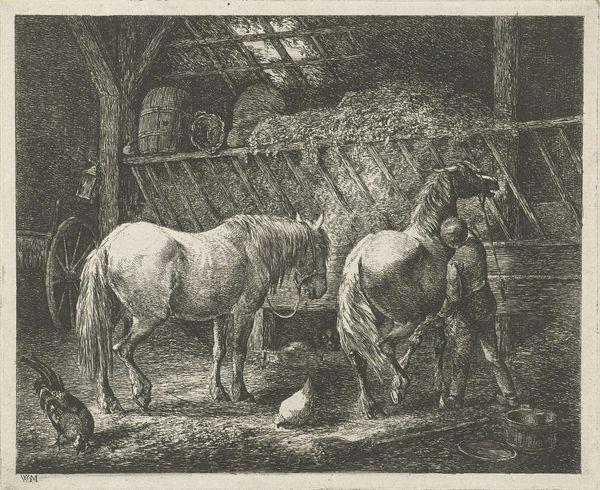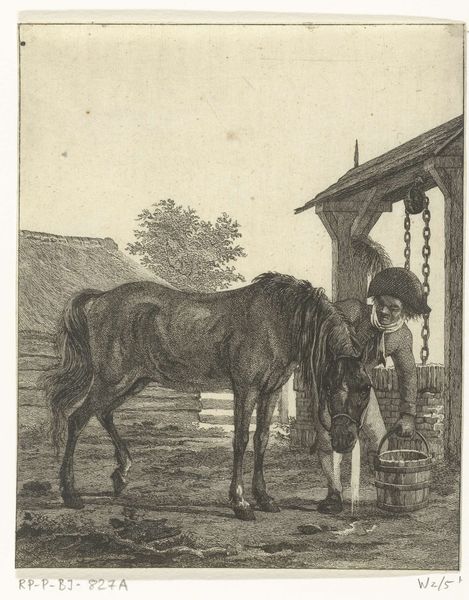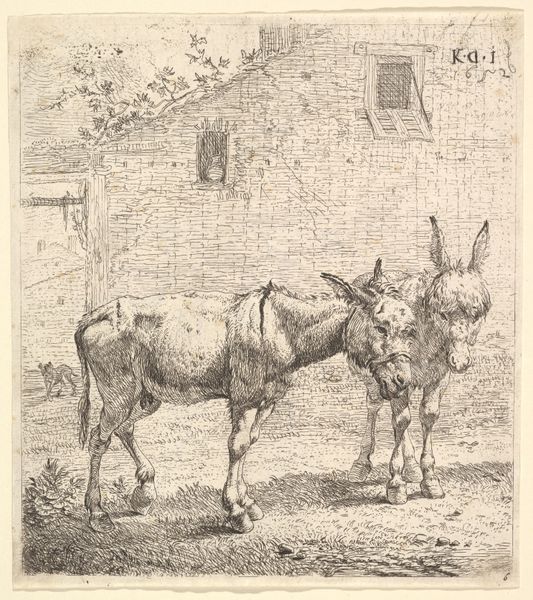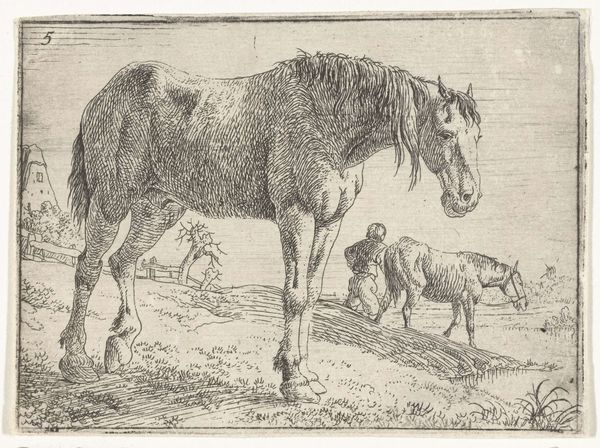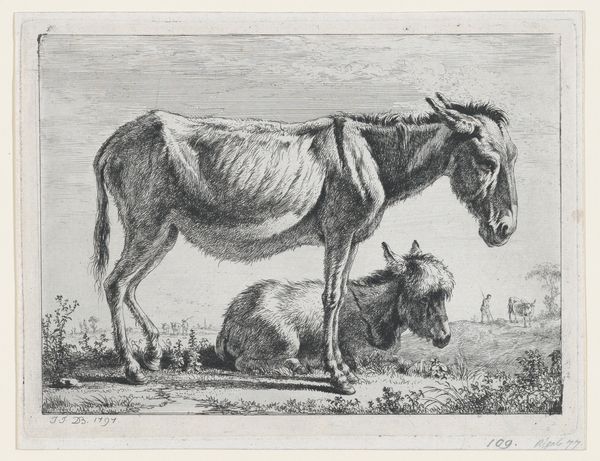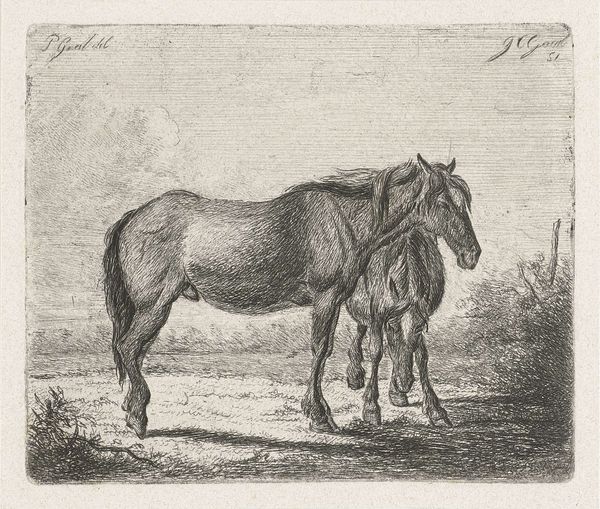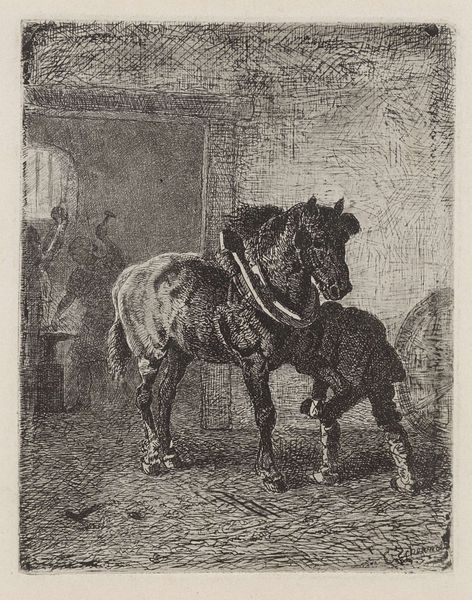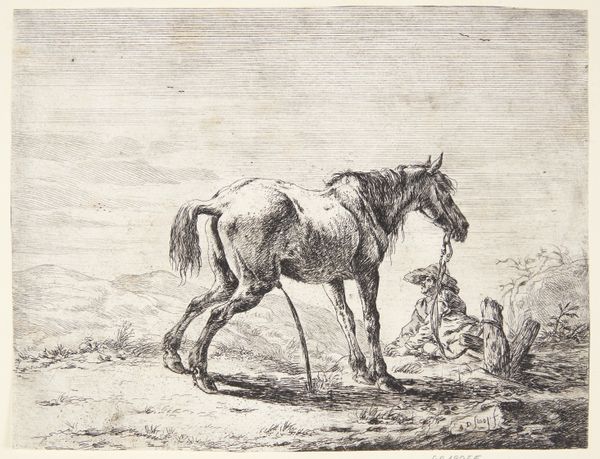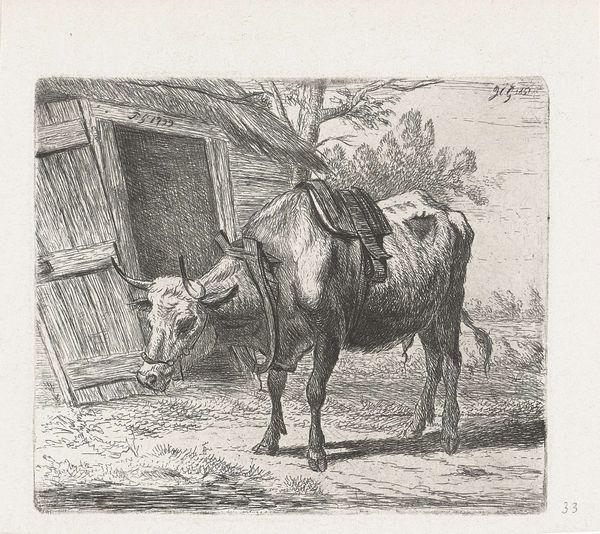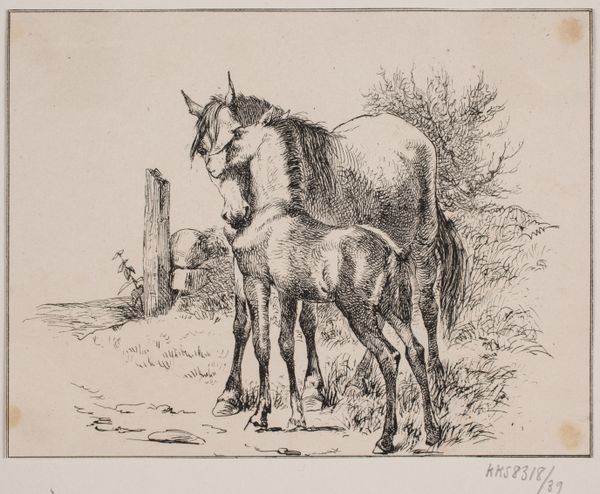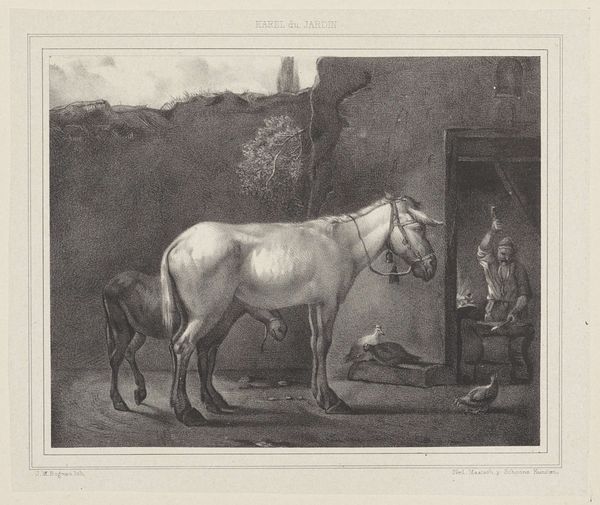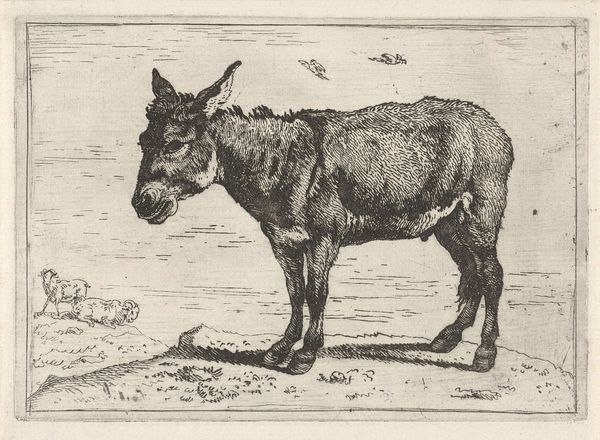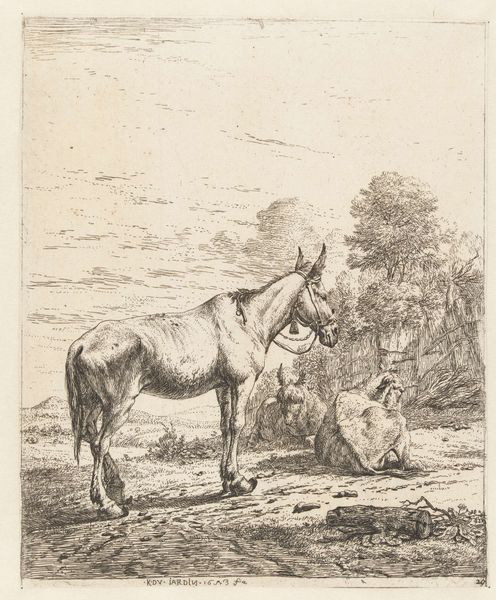
drawing, ink
#
portrait
#
drawing
#
animal
#
landscape
#
ink
#
pencil drawing
Dimensions: width 112 mm, height 97 mm
Copyright: Rijks Museum: Open Domain
This print, "Twee ezels," of two donkeys, was made by Ernst Ludwig Creite using etching. Etching involves drawing into a prepared ground on a metal plate, which is then bathed in acid. The acid bites away the exposed lines, which are then inked and printed. This indirect process, where the hand doesn't directly create the image, often results in a distinct, somewhat wiry line quality, which you can see defining the donkeys' forms and the textures of their coats. The social context is important here: prints like these were reproducible and relatively inexpensive, making art accessible to a wider audience than unique paintings. They also speak to the labor involved – not just Creite's artistic work, but the humble labor of the donkeys themselves, beasts of burden crucial to the economy. By focusing on these animals, Creite elevates the everyday, and the working class, to a subject worthy of artistic attention. This challenges the traditional hierarchy of art, where grand historical subjects often took precedence.
Comments
No comments
Be the first to comment and join the conversation on the ultimate creative platform.
